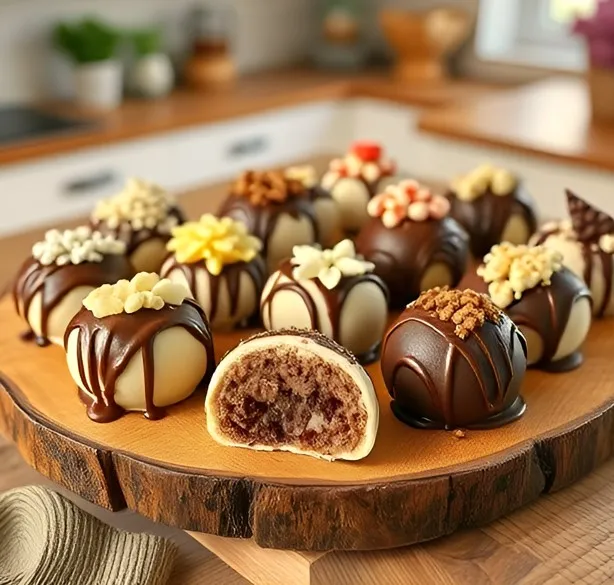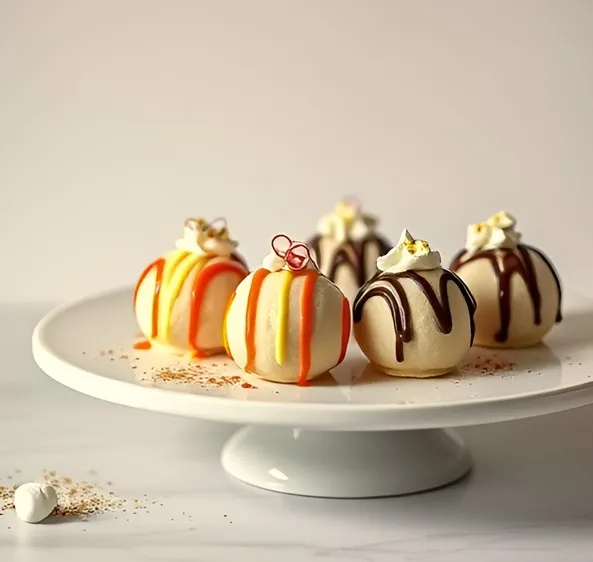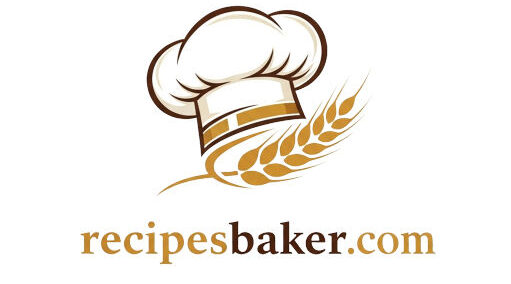If you’ve ever felt the pang of leftover cake guilt or simply craved a bite-sized dessert that’s as fun as it is delicious, this article is for you. Today, we’re diving deep into a timeless treat that has taken the dessert world by storm: the cake balls recipe. This indulgent dessert transforms even the most humble cake remnants into perfectly bite-sized, decadent treats that are ideal for any celebration—be it a birthday party, office potluck, or an intimate gathering with friends.
In this detailed guide, we’ll walk you through everything from the origins of cake balls to expert tips and tricks that ensure every bite is luscious. With valid, reliable information and a focus on high user experience, this article is designed not only to teach you how to make these delightful desserts but also to inspire your creativity in the kitchen.
Table of Contents
What Are Cake Balls?
Cake balls are essentially little spheres of cake combined with an icing or cream cheese mixture, then dipped in a delicious coating of chocolate or candy melts. Their perfect bite size makes them ideal for parties and gives you a creative outlet to experiment with flavors and decorations. While they may resemble cake pops at first glance, the cake ball is its own unique treat with a texture and flavor profile that stands apart.
Imagine transforming last night’s cake into a new, inventive dessert that offers the same comforting flavors in an entirely new form. Whether you’re using a rich chocolate cake, a moist vanilla sponge, or a layered red velvet, the possibilities are endless. Each cake ball is a little work of art—round, irresistible, and loaded with flavor.
At its core, the cake balls recipe is a canvas for culinary creativity. The idea is to infuse simplicity with a touch of artistry, turning everyday leftovers into special moments of indulgence that delight the senses.

The Inspiration Behind the Cake Balls Recipe
Cake balls first emerged as a popular dessert trend over the last decade, capturing the hearts of food enthusiasts and home bakers alike. This trend was a creative answer to the somewhat wasteful nature of leftover cake, offering a fun way to repurpose what might otherwise be wasted. The concept resonates with the ethos of sustainability and mindful cooking—it’s the art of making something extraordinary out of everyday ingredients.
Not only are cake balls a smart solution to reduce waste, but they also offer the perfect opportunity for personalization. You can adjust the recipe to include elements like flavored syrups, innovative coatings, or unique fillings. Today’s cake balls recipe isn’t just about following a set of instructions; it’s about embracing a lifestyle of experimentation and creativity in the kitchen.
Essential Ingredients and Tools for Your Cake Balls Recipe
Creating the perfect cake balls starts with assembling a few key ingredients and the right tools. Here’s what you’ll need:
For the Cake Balls:
- Leftover Cake: Use your favorite type of cake, whether it’s chocolate, vanilla, red velvet, or any other flavor. The slightly stale cake actually works best because it absorbs additional flavors.
- Icing or Cream Cheese Frosting: The icing plays a crucial role. It helps bind the cake with moisture and adds an extra layer of flavor. You can either use the frosting that came with your cake or prepare your own.
- Coating: Chocolate candy melts or tempered chocolate are among the most popular choices. You can also use other coatings like white chocolate or even caramel for a unique twist.
- Optional Add-ins: Crushed nuts, sprinkles, or mini candies can be mixed into the cake or used as decorating elements.
Kitchen Tools:
- A large mixing bowl for combining the cake and icing.
- A sturdy spoon or spatula for thorough blending.
- A scoop or tablespoon for portioning out the mixture.
- A baking sheet lined with parchment paper for setting the balls.
- A microwave-safe bowl or double boiler for melting your coating.
With these ingredients and tools on hand, you’re well-prepared to embark on your cake ball adventure.
Step-by-Step Instructions to Master the Cake Balls Recipe
Now that you have everything you need, let’s walk through each step of the process. This method ensures that your cake balls come out perfectly every time.
1. Crumble the Cake
Start by breaking your leftover cake into a large bowl. Use your hands or a fork to snag bits and pieces, ensuring there aren’t any large, uncrumbled chunks. The more finely the cake is crumbled, the more evenly the frosting will mix in, creating a uniform texture for your cake balls.
2. Add the Icing
Drizzle your frosting or cream cheese icing generously over the crumbled cake. Mix thoroughly until the cake becomes a cohesive mass. The icing not only helps to bind the cake together but also infuses every bite with rich, indulgent flavor. The ideal texture should be moist enough to roll but not so wet that it becomes a sticky mess.
3. Incorporate Optional Flavor Boosters
At this point, you can add in any extra ingredients. Some bakers like to mix in a dash of vanilla extract, a pinch of salt, or even a dusting of cocoa powder for extra depth. Feel free to experiment with crushed mints, mini chocolate chips, or toasted nuts. These additions can transform a simple cake ball into a gourmet treat with surprising bursts of flavor.
4. Shape the Mixture into Balls
Using a tablespoon or a small ice cream scoop, take portions of your mixture and roll them gently between your palms until you form perfect spheres. The size is flexible—some prefer bite-sized nuggets while others like a slightly larger, more indulgent treat. The key is consistency; try to ensure that each ball is similar in size for an even coating later on.
5. Chill the Balls
Place your freshly rolled cake balls on a baking sheet lined with parchment paper and chill them in the refrigerator for at least 1-2 hours. Chilling is a crucial step as it allows the cake balls to firm up, making them easier to dip into the melted coating without falling apart.
6. Prepare the Dipping Coating
While your cake balls are chilling, it’s time to melt your chosen coating. If using chocolate candy melts, simply place them in a microwave-safe bowl and heat in short bursts, stirring in between. Alternatively, you can use a double boiler on the stovetop for a more controlled melting process. The goal is to achieve a smooth, glossy consistency that will adhere beautifully to the cake balls.
7. Dip the Cake Balls
Once your coating is smooth and your cake balls are well-chilled, it’s time for the fun part. Using a fork or a dipping tool, gently dip each ball into the melted chocolate, ensuring that it is evenly coated. Allow any excess coating to drip off before placing the cake ball back onto a fresh piece of parchment paper. You may also toss the dipped balls in a bowl of extra toppings like sprinkles or crushed nuts for added texture.
8. Set and Serve
After dipping, let the cake balls set up at room temperature or in the refrigerator. This final step allows the coating to harden, locking in the freshness of the cake and the vibrant flavors of your custom additions. Once they’re set, arrange them on a serving platter and enjoy!
Tips and Tricks for the Perfect Cake Balls
Creating the perfect cake ball is as much an art as it is a science. Here are some expert tips to help ensure that your treats come out with high user experience and exceptional taste:
Keep It Consistent:
Uniformity is key when it comes to cake balls. Make sure each ball is approximately the same size so that they all coat and set at the same rate. This improves both the visual appeal and the overall texture of your dessert.
Experiment with Flavors:
While the classic cake balls recipe works wonders, don’t be afraid to experiment with different combinations. Try infusing the cake mixture with citrus zest or liqueurs for an added twist. You can also mix in finely chopped fruits or spices to give your cake balls a signature flavor that stands out.
Ideal Chilling is Crucial:
The chilling step cannot be overemphasized. Firming up your cake balls not only enhances the dipping process but also ensures they hold their shape. A well-chilled cake ball is less likely to crumble or fall apart when submerged in the melted coating.
Mastering the Dip:
Dipping each ball can be a delicate process. One trick is to use a toothpick to stabilize the cake ball, especially if it seems to wobble when you dip it. Additionally, if you find that your coating is too thick or clumpy, give it a quick stir or even a few seconds in the microwave to restore its smooth texture.
Coating Variations:
Don’t limit yourself to traditional chocolate. Experiment with white chocolate, caramel, or even flavored candy melts. You can also create a two-tone effect by half-dipping the cake balls in one coating and drizzling a second flavor on top.
Storage and Freshness:
Cake balls are best served fresh, but if you have leftovers, store them in an airtight container in the refrigerator. Before serving, allow them to come to room temperature for enhanced flavor and texture.
The Creative Side: Decorate and Present Your Cake Balls
Presentation matters, especially when you’re sharing these treats with friends or serving them at a special event. Here are several creative ideas to elevate the visual appeal of your cake balls:
Sprinkles and Edible Glitter:
Go traditional with a classic sprinkle topping. But for a modern twist, try using edible glitter or metallic dust. These toppings catch the light and add a festive touch to the dessert.
Drizzled Designs:
After coating your cake balls, use a contrasting chocolate or colored syrup to create an intricate drizzle pattern across the surface. This visual contrast can be particularly striking against a dark chocolate coating or a brightly colored candy melt.
Innovative Shapes and Sizes:
While round cake balls are standard, consider using mini muffin pans or silicone molds to create various shapes. Even if the final product is still round after coating, experimenting with different molds can add flair to your preparation process and help set a consistent size perfect for that elegant presentation.
Serving Ideas:
Arrange your cake balls on elegant dessert stands or in creative, theme-appropriate platters. For parties, consider adding small flags or personalized picks that can double as conversation starters. The goal is to transform each cake ball into a mini masterpiece that beckons guests to indulge.

The Secret History of Cake Balls
The modern cake ball is a testament to culinary ingenuity and resourcefulness. It famously gained popularity not only for its brilliant taste but also for its practicality. Initially, cake balls were conceived as a clever solution to repurpose leftover cake crumbs that might otherwise be wasted. Renowned for their delightful combination of cake and frosting encased in a crisp, chocolaty shell, they have evolved into a sophisticated treat embraced by both amateur bakers and professional pastry chefs.
This recipe reflects a broader cultural trend towards sustainability in the culinary arts. Chefs and home bakers alike are increasingly seeing value in using every bit of their food, and the cake balls recipe is a standout example. By turning yesterday’s cake into today’s treat, you’re not only crafting a delicious dessert but also contributing to a mindset of creative conservation in the kitchen.
How to Customize Your Cake Balls Recipe
Once you’ve mastered the basic cake balls recipe, the real fun begins. Customization is where your personality comes out. Here are some ways to tailor this delightful dessert to your tastes:
Regional Twists:
Depending on where you are in the world, you can incorporate local flavors. In a tropical climate, try adding coconut flakes and a dash of rum to the cake mixture. For a more traditional approach, a hint of cinnamon or nutmeg can evoke memories of a home-baked holiday treat.
Dietary Modifications:
If you’re aiming for a healthier twist or accommodating dietary restrictions, there are plenty of substitutions available. Use gluten-free cake as your base, and consider low-sugar icing options. You can also experiment with vegan ingredients, such as dairy-free frosting and chocolate alternatives, ensuring that everyone can enjoy the cake balls recipe regardless of their dietary needs.
Seasonal Ingredients:
Tailor your cake balls around the seasons. For instance, during the fall, incorporate elements like pumpkin spice or apple cider into the cake mixture. In the spring, a light lemon zest or lavender-infused cream cheese frosting can provide a refreshing update.
Creative Coatings:
Think beyond chocolate. Experiment with coatings like a thin layer of white chocolate drizzled with edible rose-petal syrup or even a ganache made with flavored spices. Such innovation not only personalizes your cake ball but can also elevate the dessert to a gourmet experience.
Frequently Asked Questions (FAQ)
Below are some of the most common questions we receive about cake balls, each addressing key points to help you master this delectable treat:
What is the difference between a cake pop and a cake ball?
While cake pops and cake balls are similar in that they both repurpose leftover cake, the main difference lies in presentation. Cake pops are typically served on a stick, making them easier to eat on the go, whereas cake balls are free-standing spheres that are usually dipped in chocolate and enjoyed as bite-sized morsels. The cake ball’s emphasis is on the balance of texture and flavor within a smooth, uniform ball, whereas cake pops often prioritize visual appeal through creative stick designs and decorations.
What are the balls on cake made from?
In the classic cake balls recipe, the “balls” are made primarily from a mixture of crumbled cake and frosting. This combination creates a soft, malleable dough-like consistency, which is then formed into balls. The exterior is typically achieved by dipping these balls into melted chocolate or another preferred coating, giving them a smooth, crisp finish on the outside while keeping the inside moist and flavorful.
What is the secret to dipping cake balls?
The secret lies in two key steps: proper chilling and the correct consistency of your melted coating. Chilling the cake balls ensures they are firm enough to handle the dip without disintegrating. Meanwhile, your coating should be smooth and slightly tempered—neither too thick that it clumps on the surface nor too thin that it fails to hold onto the ball. Using a fork, toothpick, or special dipping tool can further help maintain control during the dipping process to achieve that perfect, even layer.
How do you keep cake balls from falling apart?
Maintaining the structural integrity of cake balls starts with achieving the right balance between the cake and frosting mixture. Too little frosting might leave the cake too crumbly, while too much can make it overly sticky. The solution is to add frosting gradually, mixing until the consistency feels just right for rolling. Additionally, thorough chilling is vital for firming up the ball before dipping. Finally, if you’re experimenting with add-ins like extra fruits or nuts, be cautious about the quantity, as these can affect the mix’s consistency.
In Conclusion: Embrace the Creativity of Cake Balls
The cake balls recipe isn’t just a method—it’s an invitation to explore, innovate, and reimagine dessert. By transforming leftover cake into bite-sized, beautifully coated delights, you’re not only indulging in a sweet treat but also making a statement about creativity and sustainability in the kitchen.
From the initial crumbling of cake to the final artistic dips, every stage of this recipe is an opportunity to improve, experiment, and enjoy the process. Whether you’re hosting a party, celebrating a special occasion, or simply treating yourself on a quiet evening, these cake balls promise a burst of flavor and a touch of whimsy in every bite.

